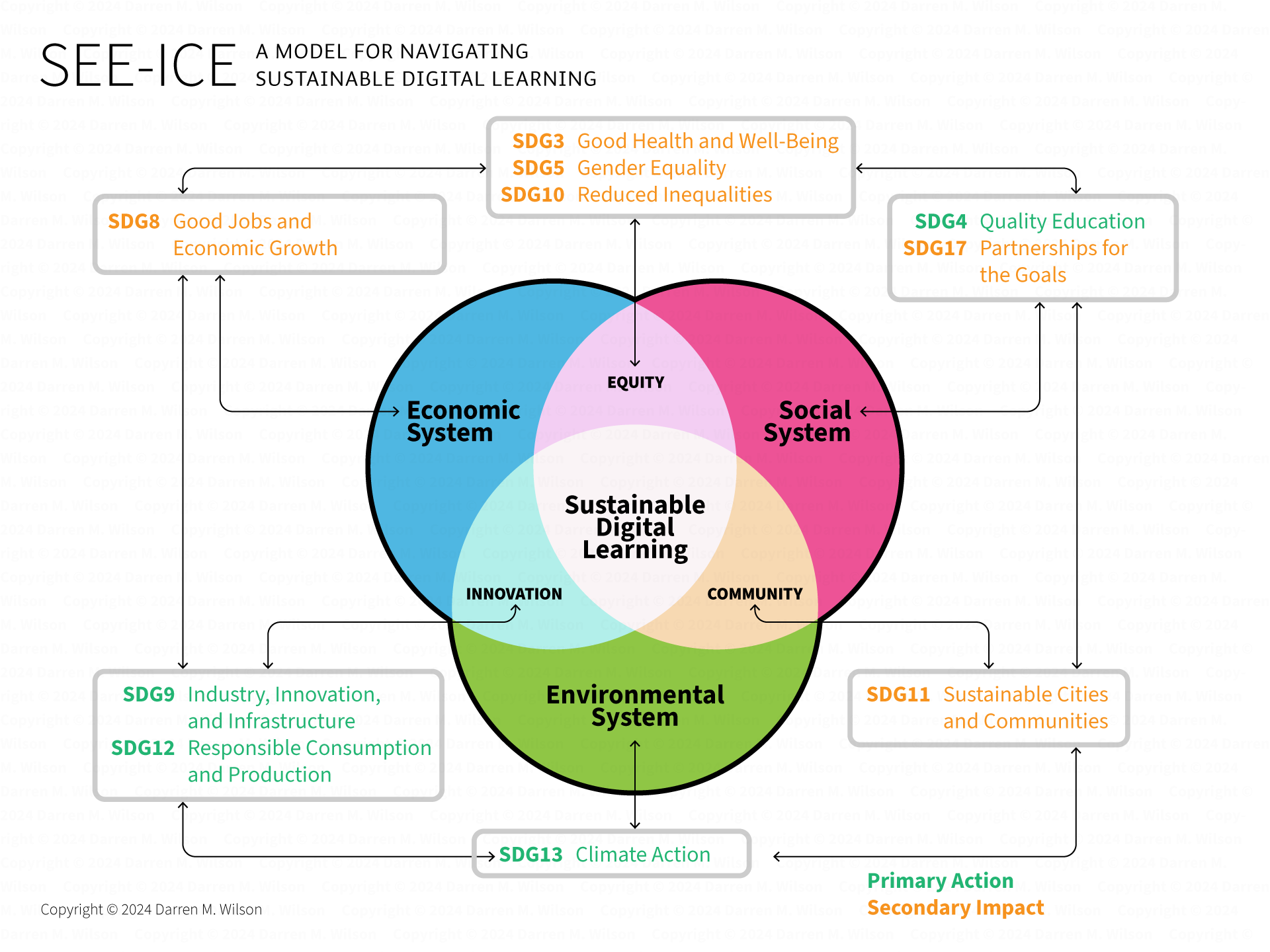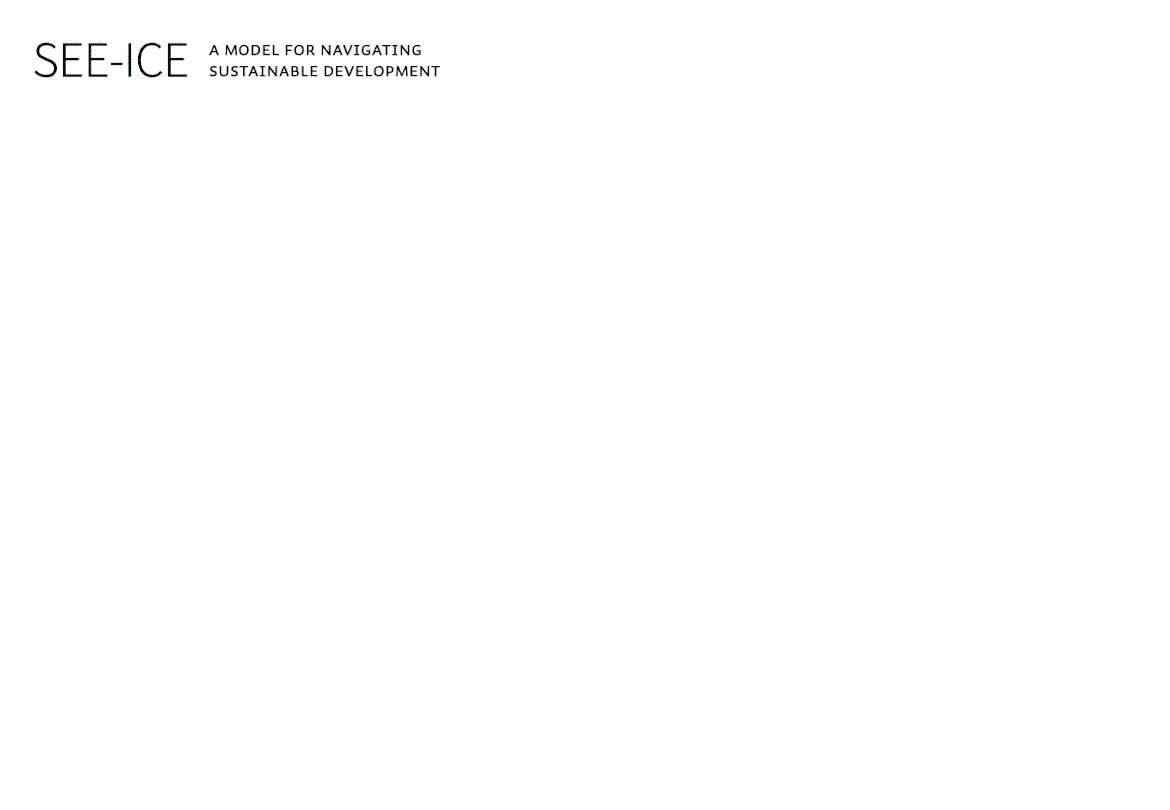The cornerstone of my major research project toward my Master of Arts – Learning And Technology was the development of a model for sustainable development that connects the three primary pillars of sustainability – Social, Environmental, and Economic systems – with secondary outcomes of Viable Innovation, Livable Communities, and Equitable Opportunities.
The 17 United Nations Sustainable Development Goals are distributed across all six categories.
I named it SEE-ICE as an acronym for Social, Environmental, and Economic systems leading to outcomes of Viable Innovation, Livable Communities, and Equitable Opportunities. SEE-ICE is also a metaphor for piloting a vessel through troubled waters, where foresight and strategy play an important role in adapting to changing conditions, mitigating risks, navigating uncertainty as we move toward the horizon.
I also applied the SEE-ICE model to digital learning in higher education, which was the focus of my research. While excellent work is being done in higher education around achieving UN SDG outcomes through operational efficiencies and teaching sustainability principles in the classroom, the modes of delivery of learning appears to be an overlooked subject, and an opportunity for further research.

I am interested in applying this model in other contexts and also in furthering my research into digital learning as a sustainable alternative to campus-based learning. If this model seems like something that could help your organization frame its SDG objectives and policy direction, or if you are involved in higher education strategy and research, please get in touch.
As of March 2025, I am now making this available through a Creative Commons Attribution-Non-Commercial-ShareAlike 4.0 International license. Please reach out if you want to use the model or build upon it.
 |
SEE-ICE: A model for navigating sustainable development by Darren M. Wilson is licensed under Creative Commons Attribution-NonCommercial-ShareAlike 4.0 International |
